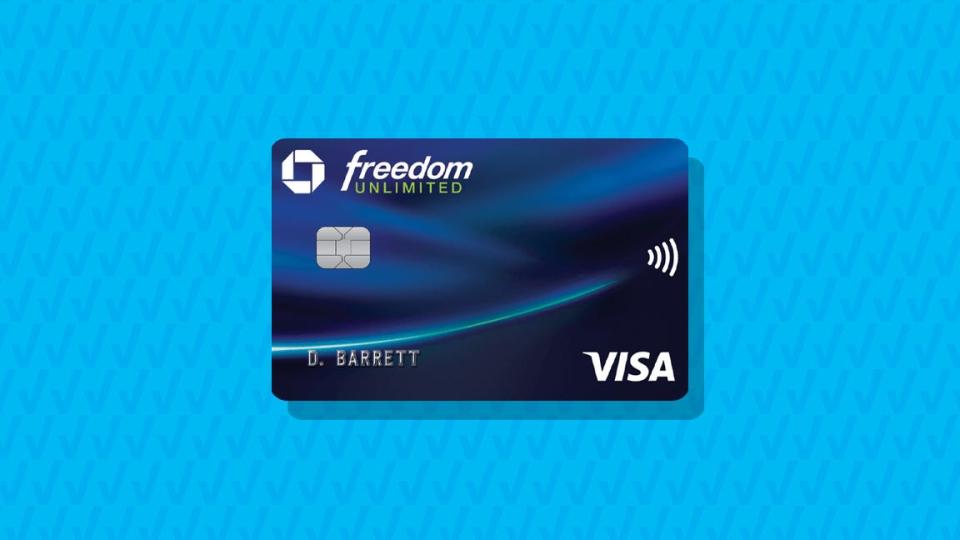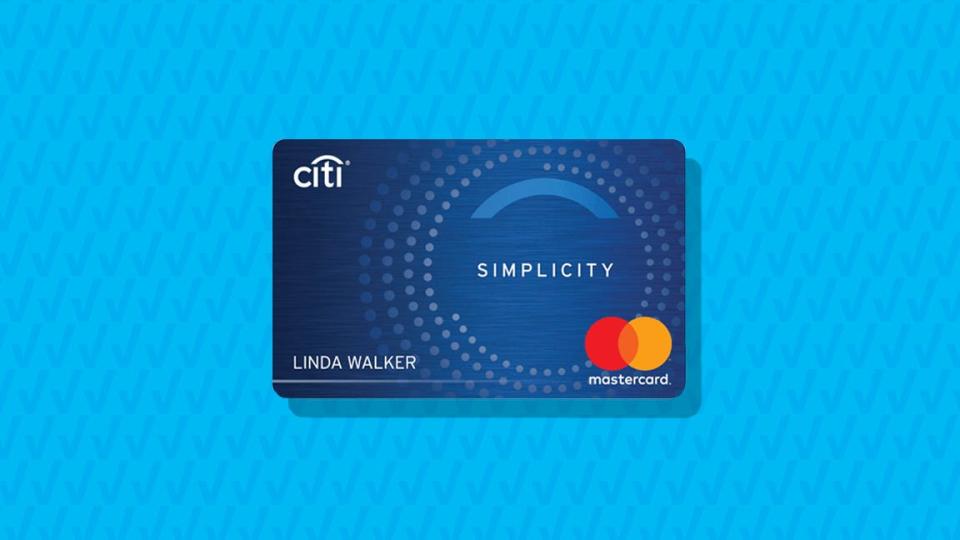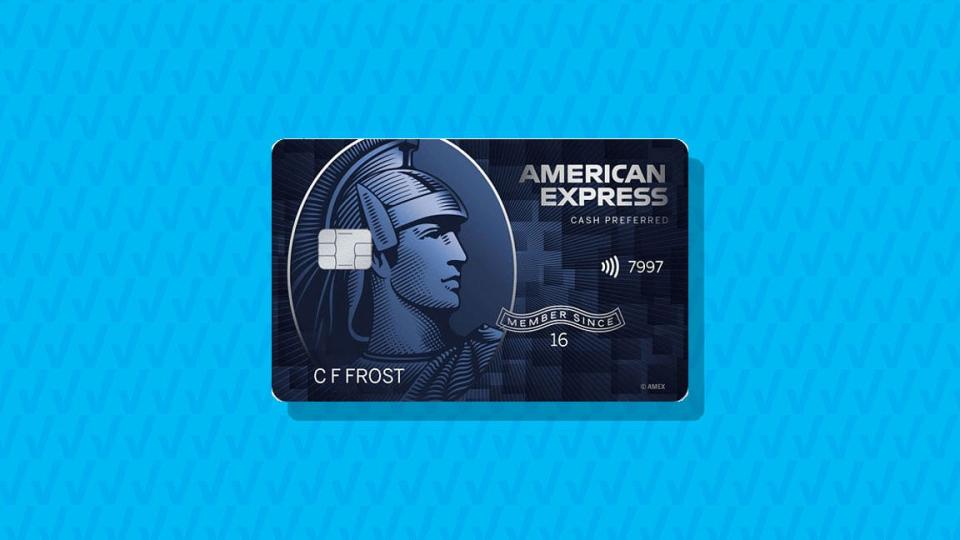What parents need to know before sharing a credit card with their kids

— Our editors review and recommend products to help you buy the stuff you need. If you sign up for a credit card after clicking one of our links, we may earn a small fee for referring you. However, our picks and opinions are independent from USA TODAY's newsroom and any business incentives.
Learning about money and credit is a big part of growing up, and parents can take certain steps to teach their kids about personal finance. Kids can start learning about money at an early age with a standard piggy bank, then gradually progress to using a checking account.
One smart strategy is to have your child start building credit about a year before they need it, such as when they're looking to take out a car loan or student loan. Credit cards can be a great option in this scenario.
There are ground rules that issuers and consumer laws set when it comes to opening a card at a young age. Generally, people can open their own credit card once they're 18, and the Credit CARD Act places further restrictions on cardholders until they're 21.
If you want to help your child learn about and build credit before their 18th birthday, you can typically add a minor to your credit card account as an authorized user, depending on the card issuer.
And you wouldn’t be alone if you did. According to a March 2019 poll by CreditCards.com, 6 million American parents say at least one of their kids has their own credit card.
If you want to help your child learn about credit before they try it out on their own, here are the five best family credit cards we recommend sharing with your child.
The best credit cards to share with your child
More: The best credit cards for college students
What to teach your child about credit cards
This will benefit both you and your child. As the primary card holder, you're legally responsible for making payments on the card, while the authorized user isn't. So make sure your authorized user understands the card's ins and outs before sharing your account. Here are a few points to cover:
Your kid should understand when the payments are due, how the annual percentage rate (APR) works, whether the card comes with fees and how to use the rewards program, if there is one.
You can set a credit limit on the card itself, but talk about setting an appropriate limit on every purchase and whether your child has to ask permission before using the card.
Agree on who will pay the bill. You may want to let your child learn to log in and make the payments, but you should double-check that it's been done every month.
Explain how identity theft can happen and ways to keep the credit card information private.
Teach your kid how to track their spending and set up alerts so they won't miss payments.
Discuss how you’ll monitor their spending. The main user of the card will typically be able to see the purchase locations and amounts on the authorized user’s card, so inform your child that you’ll be able to see what they spend, and how you plan on using that information.
Need help finding products? Sign up for our weekly newsletter. It’s free and you can unsubscribe at any time.
How we evaluated
If you're sharing a credit card with your child, you're simply adding them as an authorized user to your account. That means you could add them to any credit card as long as it's also a good fit for you and the issuer allows it. But look for these features to help your credit card beginner:
A small credit limit, around $500. Citibank, Chase and Discover allow primary account holders set authorized user limits.
A low interest rate, since interest costs make it harder to pay off credit card debt. The cards listed here either have a low APR or a 0% intro APR.
A low (or no) annual fee. All but one of the cards listed here have no annual fee.
Make sure the issuer reports the authorized user's account information to the credit reporting agencies. With responsible credit card use, this will help your child build good credit. Chase, American Express, Capital One and Bank of America report authorized user account information.
We also wanted to make sure the issuer allows credit card holders to add minors to their account. For each of the cards listed here, the issuer allows the primary cardholder to add minors to the account as authorized users. Discover restricts the age of an authorized user to 15, while American Express restricts the age to 13. The other issuers don't impose age restrictions.
Chase Freedom Unlimited

How it works: With a flat rewards rate, this is a great card to teach your child about earning and redeeming points, and how smart spending can get you more for your money. Cardholders earn an unlimited 1.5% cash back on all purchases, and rewards come in the form of points that can be redeemed for travel purchases, gift cards, or simple cash back. There's no annual fee—which makes the card more affordable—and the intro APR is 0% for 15 months (then a variable rate).
Why it's a great card to share: This card could also be a good fit for high schoolers, but consider setting strict boundaries on the rewards program. For example, you'll only redeem points for a statement credit, which will help your kid learns to pay down debt.
But be sure your teen understands credit card interest, which is the price you pay for borrowing money. You'll avoid interest charges if you pay off the balance every month, but interest starts compounding if you roll over any balance.
For example, a $1,000 balance on a card with a 25.99% APR will accrue $146 in interest over the course of a year. That will cost about $12 a month, which can negate some or all of the rewards you've earned.
Learn more about the Chase Freedom Unlimited
Discover it Miles

How it works: This card has a super-simple rewards structure with a nice bonus. Cardholders get 1.5 miles on every dollar spent, with no bonus categories to worry about, and Discover matches all the rewards you've earned after the first year.
You can redeem rewards as either cash to your bank account or as a statement credit to cover travel purchases. The APR is 0% for 14 months on purchases, then a variable rate.
Why it's a great card to share: Because this card is geared toward travelers, we recommend sharing it with young college students who plan to study abroad.
It's also friendly to credit card newbies because Discover waives the first late-payment fee, charges no annual fee and provides a free credit-monitoring service.
Learn more about the Discover it Miles
Bank of America Cash Rewards Credit Card

How it works: Cardholders get 3% cash back in the category of their choice, 2% cash back at grocery stores and wholesale clubs (up to $2,500 in combined choice category/grocery store/wholesale club quarterly purchases), and 1% cash back on all other purchases.
You'll earn rewards in the 3% and 2% categories on the first $2,500 in combined purchases each quarter, then earn 1%.
There's no annual fee, and the APR is 0% for 15 billing cycles (then a variable rate). Cardholders also get a $200 welcome bonus after spending at least $1,000 within 90 days of account opening.
Why it's a great card to share: This card is a good fit for people who have a Bank of America checking account—perhaps older college students or those who have just graduated. That's because Bank of America Preferred Rewards clients can get a 25%, 50% or 75% bonus on credit card rewards if they have a qualifying account.
Another nice detail: The flex category can be changed as often as once a month, so you and your college student can take turns choosing the bonus reward.
A word of caution here: When your credit card has a welcome bonus, be sure you and your child don't spend more than your budget allows just to meet the spending requirement.
Learn more about the Bank of America Cash Rewards Credit Card
Citi Simplicity

How it works: This bare-bones card is true to its name: It charges no late fees, penalty APR or annual fee, and there's no rewards program. The purchase APR is 0% for 12 months from account opening, then a variable rate.
Why it's a great card to share: The simple structure is a good fit for young high schoolers who just need to understand the mechanics of using a credit card. The lack of a rewards program is perfect if you think your teen would spend more on a credit card just to earn points, and the higher interest rate doesn't kick in for one year, giving your child time to understand the card.
And if your child makes a credit card blunder—such as missing a payment—there's some forgiveness. Just be sure to discuss the misstep with your kid and teach them how to avoid it in the future. Once they learn the basics of using a credit card responsibly, you may consider moving on to a card with more bells and whistles.
Learn more about the Citi Simplicity
Blue Cash Preferred from American Express

How it works: If you have a family, chances are you're constantly spending money on groceries and gas. This card helps you get money back on those common expenses. Cardholders earn 6% cash back on up to $6,000 spent at U.S. supermarkets per year (then 1%), 6% cash back on U.S. streaming services, 3% back on U.S. transit services and 3% cash back at U.S. gas stations.
Why it's a great card to share: The bonus categories align with purchases that are popular among young adults, such as Spotify, Netflix and Uber. Plus, you'll get rewarded for basic family expenses, such as groceries and gas.
We recommend sharing this card with a child who's at least 18, though it's even better if the child is in the job force. That's because American Express only reports account information to the credit bureaus for cardholders who are at least 18 years old, and the card comes with a more complex rewards program. There's also an annual fee of $95, which is waived for the first year. We think it's best for cardholders who have the income and responsibility for such features. See rates and fees as terms apply.
Learn more about the Blue Cash Preferred from American Express
Please note: The offers mentioned above are subject to change at any time and some may no longer be available.
Reviewed has partnered with CardRatings for our coverage of credit card products. Reviewed and CardRatings may receive a commission from card issuers.
See rates and fees for the Blue Cash Preferred Card from American Express.
Other top credit card options
Common credit card terms
Annual percentage rate (APR): When it comes to credit cards, the APR is simply the interest rate you pay when you don't pay off the balance at the end of your billing cycle. APRs are expressed as a percentage and come in two main types. (1) Variable APRs can increase or decrease over time. (2) Fixed APRs will never change. The average APR is about 16%; you can check your cardmember agreement to find your rate. The card issuer may apply a different APR to your purchases, balance transfers, and cash advances. If you break the terms of the card agreement, you may have to pay a higher APR, called a penalty APR, for a certain time frame.
Billing statement: A periodic statement from your credit card issuer that lists the card balance, minimum payment due, rewards earned, fees and interest charged, and a list of transactions you've made during the billing cycle. Check your statement each month to look for transaction errors, extra fees you're paying, and how long it will take to pay off the card using just the minimum payment.
Credit limit: The maximum amount you can charge to your credit card. Once you hit the credit limit, you need to pay down some or all of the balance before the issuer replenishes your credit line.
Late payment: A credit card payment that's made after the due date or is less than the minimum payment required. The card issuer may charge you a late fee and could report the late payment to the credit bureaus. A large part of your credit scores is based on payment history, so it's important to always make on-time payments.
The product experts at Reviewed have all your shopping needs covered. Follow Reviewed on Facebook, Twitter, and Instagram for the latest, deals, product reviews, and more.
This article originally appeared on Reviewed: How to share a credit card with your child—and why you may want to

 Yahoo Movies
Yahoo Movies 
